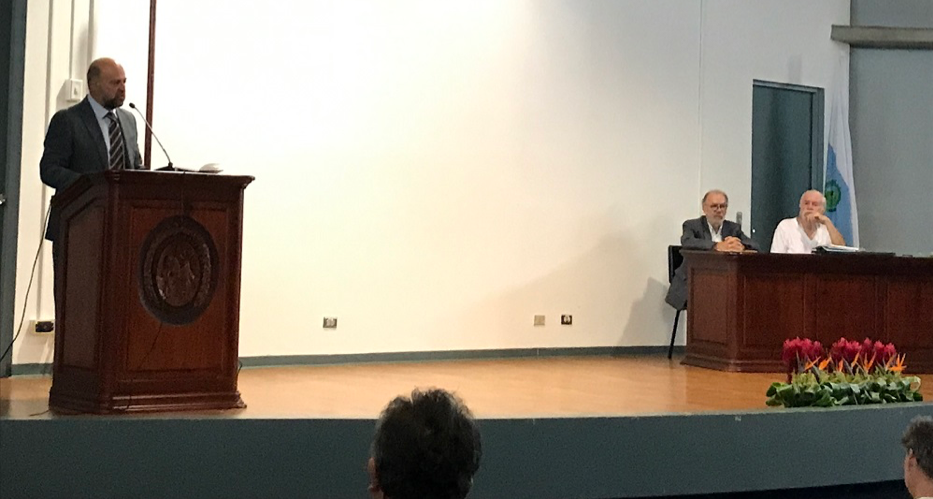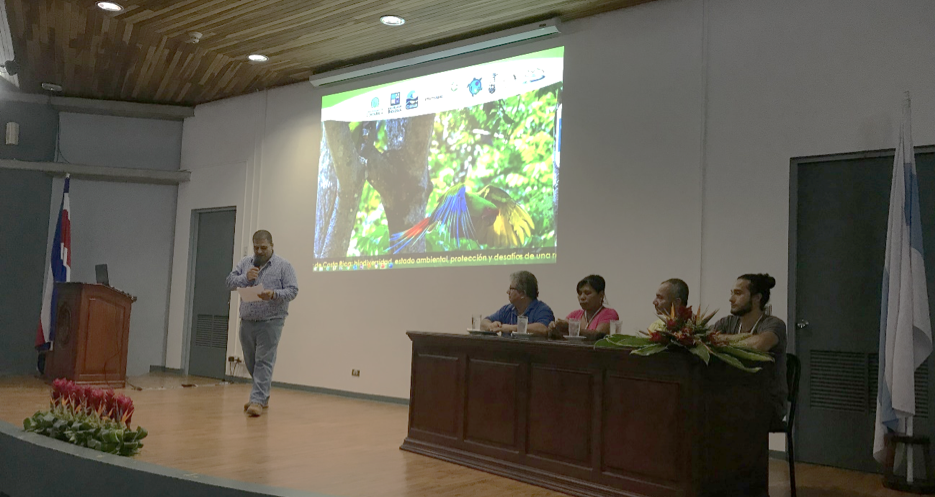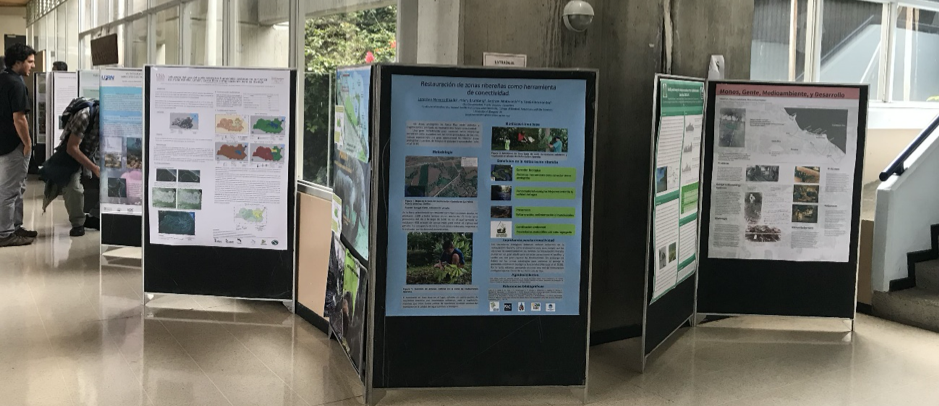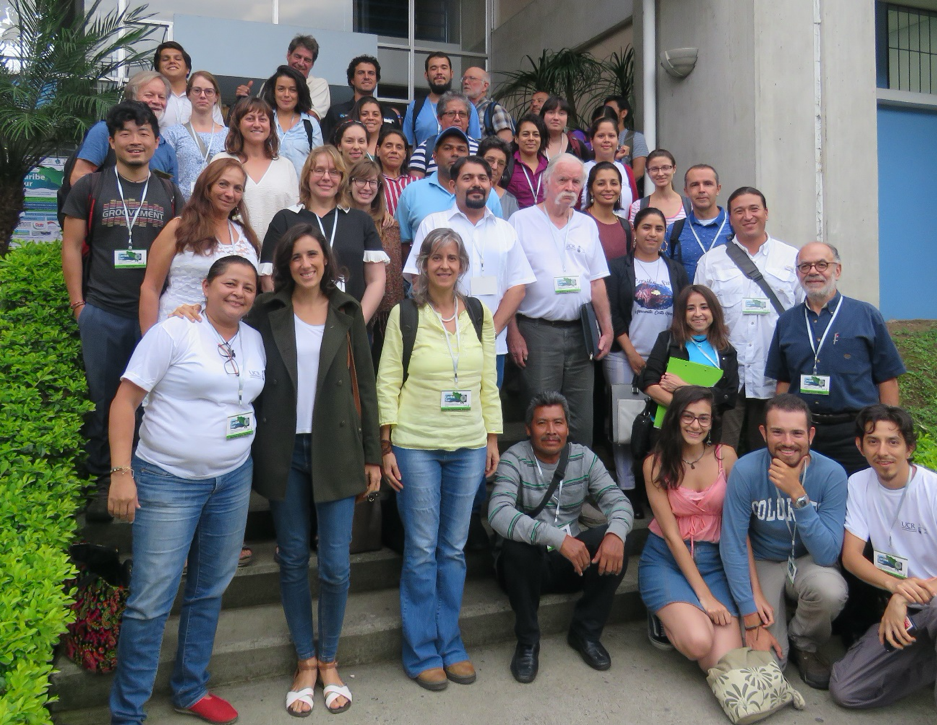SYMPOSIUM “THE SOUTHERN CARIBBEAN OF COSTA RICA: BIODIVERSITY, ENVIRONMENTAL HEALTH, PROTECTION AND CHALLENGES IN A LITTLE STUDIED REGION” Following is an edited version of the introduction to our 70 pages report on the symposium “El Caribe Sur de Costa Rica: biodiversidad, estado ambiental, protección y desafíos de una región poco estudiada” (The Southern Caribbean of Costa Rica: biodiversity, environmental health, protection and challenges in a little studied region).
If you would like to see a summary report (in English or Spanish) on the symposium, summaries of all the individual presentations and more photos of the event are available at the bottom of this page. Encuentre al final de esta página el informe del simposio (en español e inglés). The symposium, which we hope presages many further collaborations with the University of Costa Rica (UCR), was held during July 9-11, 2019 at the Auditorium of the Ciudad de la Investigación on the UCR campus. The event, organized by Asociación ANAI and CIMAR (Center for Research in Marine Science and Limnology) of the UCR was cosponsored by MINAE (Costa Rican Ministry of the Environment) and ACLAC (Área de Conservación La Amistad Caribe). It was made possible by financial support from 27 sponsoring organizations and individuals (See section 2 of the full report; a complete program can be found in Section 3).
A total of 127 individuals, representing at least 45 organizations, registered and attended programs including 5 plenary addresses (Section 4.1), 40 shorter oral presentations (Section 4.2), 19 posters (Section 4.3) and 2 panel discussions, all focused on the biodiversity of the southern Caribbean region of Costa Rica, and the factors impacting that biodiversity. Although the emphasis was regional, it is worth noting attendance by individuals from at least 11 countries. More important in terms of human diversity was the inclusiveness of the gathering, with attendance not only by academic scientists, but also students, government agencies, professional conservationists, environmental activists, local providers of goods and services, and the general public. A major purpose of the event was to draw attention to the core of a true biodiversity “Hot Spot” which is in fact understudied and underpublicized. In the context of the Symposium, “Caribe Sur” was defined as including everything in Costa Rica from the western border of the Río Estrella watershed to the Panamanian border (Río Sixaola) and from the Continental Divide, at altitudes of up to 13,000 ft (3800 m), to the Caribbean coast, and including the inshore marine environment. The region comprising the Southern Caribbean of Costa Rica, together with a nearly equal, and largely protected adjacent area in Panama, comprises the largest and most nearly intact block of forested land within the Mesoamerican land bridge, recognized as one of 36 biodiversity “Hot Spots” by the Critical Ecosystem Partnership Fund. Costa Rica as a whole is cited by INBio (Costa Rican National Biodiversity Institute) as containing about 4% of the Earth’s biodiversity in 0.01% of its land area. Within Costa Rica, the southern Caribbean is without doubt the most diverse region, owing to its extreme altitudinal range, rugged topography and relatively intact state. It is probable that no other place on earth has more “intense” biodiversity – measured as number of species per area. In other words, there is nowhere else which presents an equal opportunity to protect so much biodiversity in such a relatively small area. It was anticipated that a major theme of the Symposium would be connectivity vs. fragmentation across the landscape. The program was organized so as to facilitate this theme. In general, presentations involving work at higher altitudes were programmed for early in the event, while those on the marine environment were given on the last day. Prior to and during the course of the Symposium it became clear that it is equally imperative to promote connectivity among the human actors (government agencies, scientists, professional conservationists and the inhabitants of the Caribe Sur) if physical and biological connectivity are to be protected or enhanced. Other major themes included climate change, governance, population/infrastructure growth, the role of indigenous lands, and interactions between biodiversity and socioeconomic life. The Minister of the Environment, Carlos Manuel Rodríguez, gave the opening welcome speech, in which he congratulated us for being the first regional group to hold such a gathering, and suggested that parallel events should be held for all parts of the country. He went on to say that the biggest hurdle facing Costa Rica in maximizing benefit from biodiversity is the limited amount of scientific information available. He supported one of the reasons for expanding the scope of the Symposium beyond that of the usual academic forums by drawing attention to the unique cultural and social characteristics of the Caribe Sur as equal in importance to the biological aspect. The Minister’s comments, and the entire content of the Symposium serve to reinforce what ANAI has been up to since the beginning. Finding and implementing ways to “conserve biodiversity on a full stomach”. The participation of so many diverse actors in celebrating this idea serves to enhance our optimism about the future of the Caribe Sur. Downloading Instructions:
Instrucciones para Descargar:
|
|
Copyright © 2020




